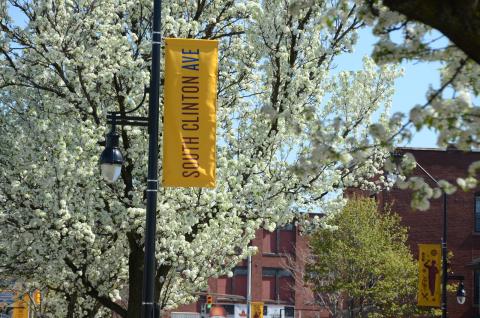Solar Field on Former Emerson Street Landfill
From Brownfield to Brightfield
The City of Rochester turned a portion of a former city landfill into a 2-MegaWatt solar field. After several years of environmental clean-up, part of the former Emerson Street Landfill on 1655 Lexington Ave is now being used for renewable energy generation.
The City of Rochester selected Solar Liberty, a Buffalo-based solar company, to install, maintain, own, and operate the solar field. Working with their partner, AES Distributed Energy, Solar Liberty completed the project in 2017.
The power generated from the solar field is remote net metered to the City of Rochester’s City Hall and Central Vehicle Maintenance Facility. Remote net metering refers to the process in which energy generated from the field will go directly into the RG&E distribution system and the City will receive a credit from RG&E for the quantity of electricity generated each month. The credit amount is greater than the power purchase agreement rate, thus saving money for the City and allowing the City to invest in other City projects. The City of Rochester signed a power purchase agreement (PPA) with Solar Liberty in which, for twenty-five years, the City will purchase power from Solar Liberty/AES Distributed Energy.
Renewable energy is a financially and environmentally sound way to reduce greenhouse gas emissions and help mitigate the impacts of climate change. The solar energy output from this site generates enough electricity to power the equivalent of more than 200 homes per year.
Quick Facts
- It is anticipated that the City will realize savings of at least $80,000 per year, with total cost savings of over $2 million over the 25-year term of the PPA.
- The pad for the solar field was constructed by the City, re-using iron slag excavated during construction of the Port Marina, resulting in the avoidance of landfill disposal costs for the City.
- In the first year alone, the emission of approximately 2,300 tons of CO2 was eliminated – equivalent to greenhouse gas emissions from close to 500 passenger vehicles driven for 1 year or 12 rail cars of coal burned.






